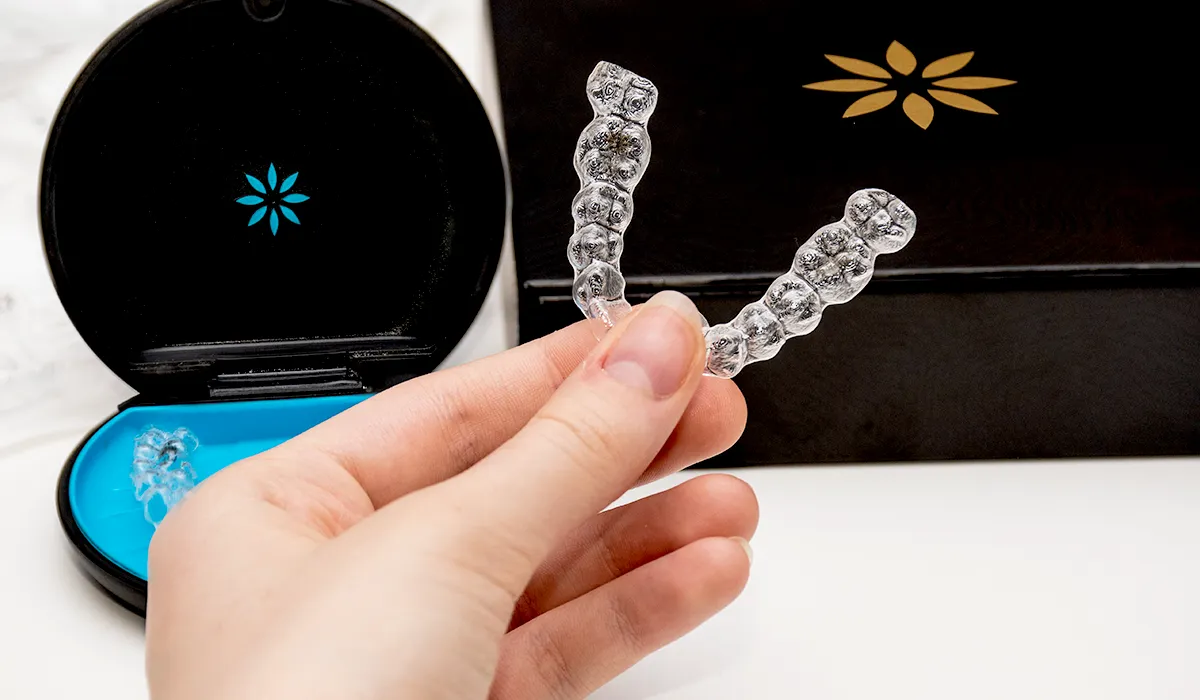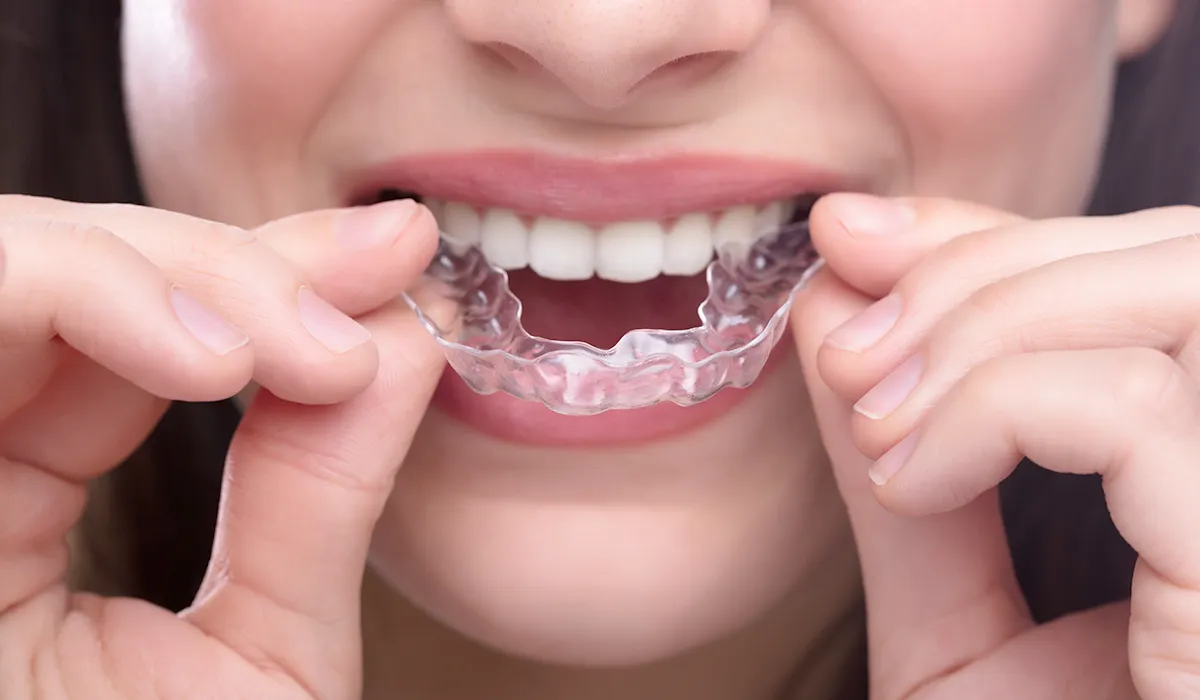Imagine straightening your teeth without drawing attention—no bulky metal brackets, no dietary limitations, and no interruptions to your daily routine. Just a sleek, barely-there solution that fits seamlessly into your life.
Clear aligners have quietly reshaped modern orthodontics by offering a more comfortable, discreet, and lifestyle-friendly way to achieve a straighter smile. But are they the right choice for your unique goals? That depends on your teeth, your habits, and what you hope to achieve. Let’s explore whether clear aligners are the path to the smile you’ve been dreaming of.
What are clear aligners—and how do they work?
Clear aligners are a modern orthodontic solution made from medical-grade, BPA-free, flexible thermoplastic. They are custom-made to fit snugly over your teeth, applying gentle pressure to gradually shift them into better alignment. Think of them as a nearly invisible alternative to braces, with no brackets or wires.
The process begins with a digital scan of your teeth. This scan is used to create a virtual model of your current bite and map out a step-by-step plan to your ideal smile. A series of aligners is then fabricated, each slightly different from the last to reflect small movements.
You wear each set for about 1 to 2 weeks, at least 20 to 22 hours per day. They’re only removed for eating, drinking anything besides water, and cleaning your teeth. As you move from one set to the next, your teeth gradually and comfortably shift into place.

What can clear aligners treat?
Clear aligners are incredibly effective for treating a wide range of orthodontic concerns, particularly in mild to moderate cases. These include:
- Crooked or misaligned teeth
- Overcrowding
- Spacing or gaps between teeth
- Overjet (upper teeth overlap lower teeth too much)
- Crossbite (lower teeth extend beyond upper teeth)
- Open bite (upper and lower teeth don’t touch when the mouth is closed)
- Rotated or tilted teeth
- Relapse cases (teeth shifting after previous orthodontic treatment)
For more complex issues, such as severe bite misalignment, large tooth movements, or skeletal discrepancies, a different approach, like fixed braces or combined treatments, may be more appropriate. Your dentist will assess your suitability through a thorough examination and digital planning.
Are clear aligners your best solution?

- Teens and adults who are committed to wearing aligners consistently
- Individuals with mild to moderate alignment concerns
- People who prefer a discreet, removable treatment option
- Patients with healthy teeth and gums, free from decay or active periodontal issues
- Those who want a predictable treatment plan with digital previews
- Have untreated dental issues like decay or gum disease
- Can’t commit to wearing the aligners 20–22 hours per day
- Require complex or extensive bite corrections
- Struggle with following oral care instructions
What are the benefits?
Here’s why so many patients love clear aligners:
- Invisible appearance – Most people won’t notice you’re wearing them
- Removable convenience – Eat whatever you like and clean your teeth easily
- More comfortable – No poking wires or bracket irritation
- Digital precision – Your treatment is designed using advanced 3D technology
- Fewer appointments – No wire adjustments or emergency visits
- Boosted confidence – Smile freely during and after treatment
Are there any drawbacks?
Every treatment has trade-offs. With clear aligners, it’s important to be aware of:
- Strict wear schedule: Consistency is key to successful transformation
- Mild discomfort: Some pressure or soreness with new trays is normal
- Possibility of attachments and interproximal reduction (IPR): Tooth-coloured bumps may be temporarily bonded to help specific teeth move. IPR involves slimming the teeth slightly at their widest points to create space for relieving crowding elsewhere in the arch.
- Not ideal for everyone: Complex bite problems may need braces or surgery
- Lost trays: Since aligners are removable, they can be misplaced
How long does clear aligner treatment take?
Treatment time depends on the complexity of your case and how faithfully you wear your aligners. On average:

- Mild cases: 4 to 6 months
- Moderate cases: 6 to 12 months
- Severe or comprehensive cases: 12 to 18 months or longer
Your dentist will provide a custom treatment timeline after evaluating your scans and bite.
So, is it worth it?
For many patients, the answer is a confident yes. Clear aligners offer a combination of comfort, control, and cosmetic appeal that traditional braces can’t match. If you’re committed to wearing them as instructed and your case is suitable, they can deliver outstanding results, sometimes more quickly and discreetly than expected.
Take the first step—consult your dentist
If a straighter, more confident smile fits within your personal goals, your best move is a professional consultation. A dentist or orthodontist will examine your teeth, take digital impressions, and determine whether clear aligners are right for you.
With virtual simulation, you can even see how your teeth could look post-treatment, before committing to the process.
Fly under the radar—and smile better
Are clear aligners a cosmetic fix? Absolutely—and so much more. They can improve oral health, boost your confidence, and help you love your smile again, all without those around you noticing the mechanics of the process. Whether you’re preparing for a big event, a career boost, or simply want to invest in yourself, clear aligner treatment may be the low-key big-results solution you’ve been waiting for.
The first step? Talk to your dentist and start your journey to a straighter, healthier smile—on your terms.


